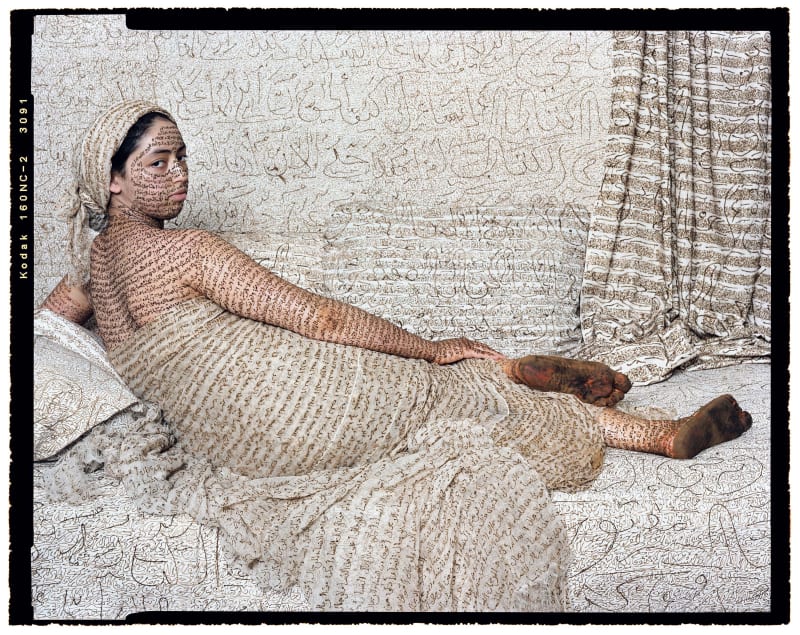Lalla Essaydi's new works incorporate layers of Islamic calligraphy applied by hand with henna, in tandem with poses directly inspired by 19th Century Orientalist painting. By appropriating this imagery, the works reflect the "complex female identities" found in Morocco and throughout the Muslim world. Essaydi's photographs provide the opportunity for the artist and her subjects to engage in the emerging "culture of Islamic feminism."
During the 19th Century, French painters such as Jean Auguste Dominique Ingres, Eugène Delacroix and Jean-Léon Gérôme indulged their audiences with the trend for images of the middle-eastern harem and the eroticisized Arab female body. Utilizing the perspective of an Arab woman living in a Western world, the artist attempts to reexamine Arab female identity.
Set within an unoccupied house, owned by the artist's family, a place to which Essaydi was sent as a form of punishment when she disobeyed, Les Femmes du Maroc represents an exploration of the imaginary boundaries and "permissible space" codified by traditional Muslim society. Essaydi writes, "the presence of men defines public space, the streets, the meeting places. Women are confined to private spaces, the architecture of the homes."
"I am writing. I am writing on me, I am writing on her. The story began to be written the moment the present began." Translated from the original Arabic, Essaydi's personal writing subverts traditional Muslim gender stereotypes through the presence of the written word. The sacred Islamic art form of calligraphy, traditionally reserved exclusively for men, is employed by Essaydi as a small act of defiance against a culture in which women are relegated to the private sphere. Crossing a prohibited cultural threshold through the act of writing, Les Femmes du Maroc enables the artist and her subjects to engage in a simple act of self-expression.
Essaydi's work has been exhibited in many major U.S. and European cities, including Boston, Chicago, Atlanta, Minneapolis, Texas, Buffalo, Colorado, New York, Syria, Dubai, the Netherlands, Germany, and England, and is represented in a number of collections, including the Williams College Museum of Art, The Art Institute of Chicago, the Fries Museum, the Netherlands, The Museum of Fine Arts, Houston, The Kodak Museum of Art, The Columbus Museum Of Art, Ohio, The Kresge Art Museum, Michigan, The Museum of Fine Arts, Boston, The Santa Barbara Museum of Art, California, The Colorado Museum of Art, Colorado, The Brooks Museum of Art, Memphis, the North Carolina Museum of Art, North Carolina, the Neuberger Museum, New York, and the Brooklyn Museum of Art, New York.

